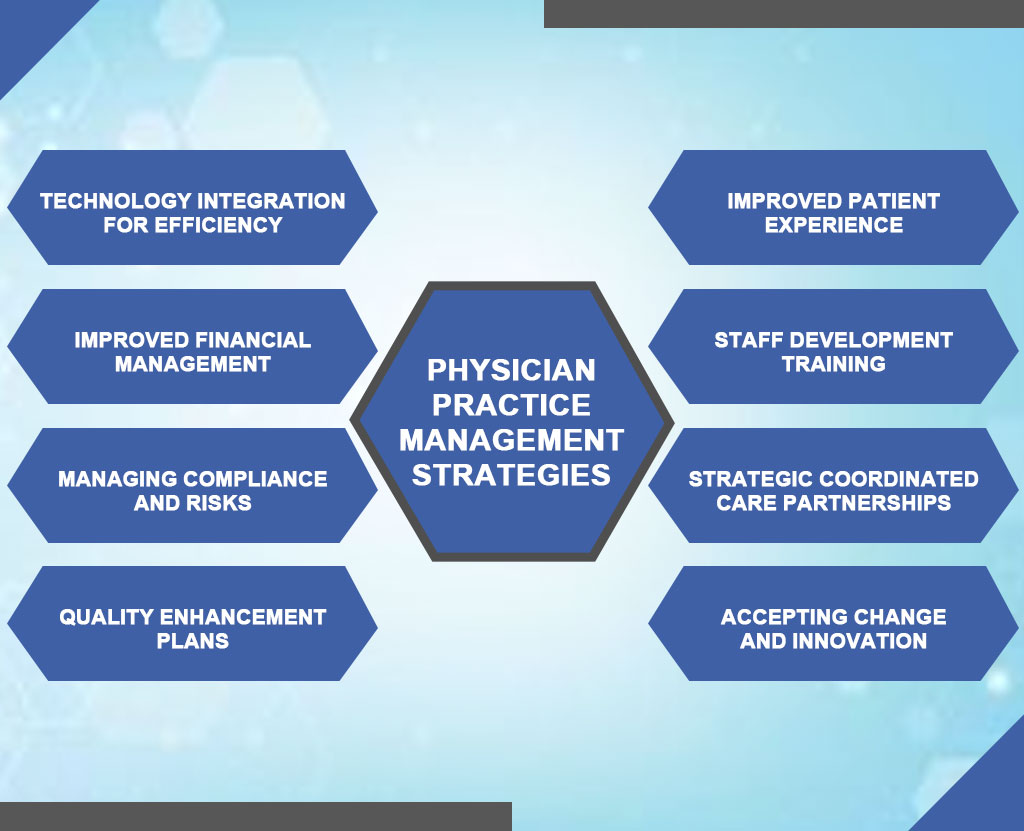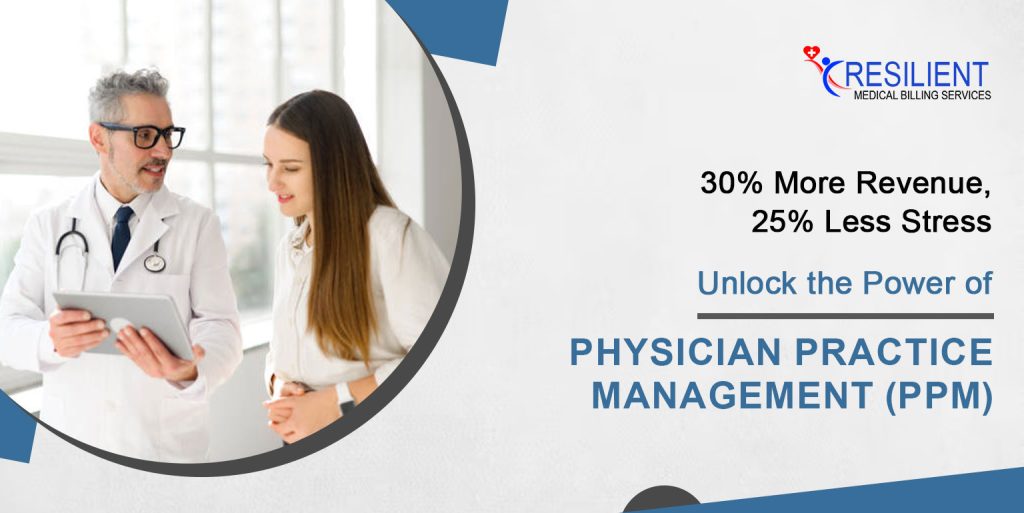Physician practice management (PPM) is critically an important field in the medical field that helps in the daily running of the practices. It is the study of information management and processing and is designed to enable a practice to run as smoothly and efficiently as possible while providing the best possible care to clients.
According to MGMA, the level of practice management is capable of increasing income by 30 percent. AMA survey also indicated that, on average, 25% of physicians’ working time is spent on administrative tasks, stressing the importance of proper PPM.
Physician practice management refers to the administration of a practice, and this may encompass the practice’s billing and credentialing services, client calendar, employees, and regulatory issues.
PPM in revenue cycle management is important, more so as poor billing practices continue to result in inefficiencies that cost the healthcare business billions. As a result, improving these processes is one of PPM’s core objectives in order to help practices increase profitability and patient satisfaction.
Physician Practice Management Strategies

Technology Integration for Efficiency
We are integrating EHRs and practice management systems to improve the workflows of physicians billing. Telemedicine improves access to care by providing remote consultations and patient monitoring.
Improved Patient Experience
Personalizing treatment planning and boosting communication using patient portals and secure messaging. Patient education improves health and empowers patients.
Improved Financial Management
Revenue cycle optimization reduces claim denials and improves collections. Contract agreements with payers guarantee adequate reimbursement and cost-effective inventory management.
Staff Development Training
Medical breakthroughs and best practices education and cross-training to promote flexibility and efficiency. Communication and empathy training improve patient relationships.
Managing Compliance and Risk
Maintaining HIPAA and MACRA compliance. Audits and risk evaluations decrease hazards, and cybersecurity protects patient data.
Strategic Coordinated Care Partnerships
Working with healthcare providers like hospitals and clinics. Participation in ACOs, value-based care models, and community and patient advocacy groups.
Quality Enhancement Plans
Participation in MIPS and APM quality reporting programs. Continuous clinical outcomes and patient satisfaction monitoring using evidence-based methods and clinical recommendations.
Accepting Change and Innovation
Adopting new technologies and treatment methods and adapting to market and healthcare trends. Creating an innovative, improving culture.
Physician Practice Revenue Cycle Management
It is generally agreed that good RCM is very important for the financial health of a physician’s office or company. RCM takes care of these claims, payments, and cash. Of course, it’s important to stress that healthcare workers must be paid on time and correctly.
To increase the income of physician offices, it is efficient to reduce the rejected claims, improve the collection rate, and optimize billing with RCM. It enhances the functioning of the company or organization and legal permissiveness. RCM leads to better revenue collection, reduction of overhead work, and patient-oriented outcomes.
Revenue cycle management services are quite crucial in maintaining the profitability of physician practices. It consists of activities and procedures that can increase sales and minimize costs.
Based on the results of this blog, it is clear that the RCM has a good effect on both the financial success of physician offices and the happiness of their patients.
Contact Us Now!
FAQs
PPM monitors medical practice operations to optimize efficiency, administrative duties, revenue cycles, and patient care coordination.
Improved scheduling, billing, revenue collection, patient involvement, and practice expansion are benefits.
EHR integration, appointment scheduling, billing management, and reporting analytics decrease paperwork, enhance accuracy and boost productivity.
Technology automates operations, lowers paperwork, and enhances provider-patient contact, enabling more tailored care and better outcomes.










